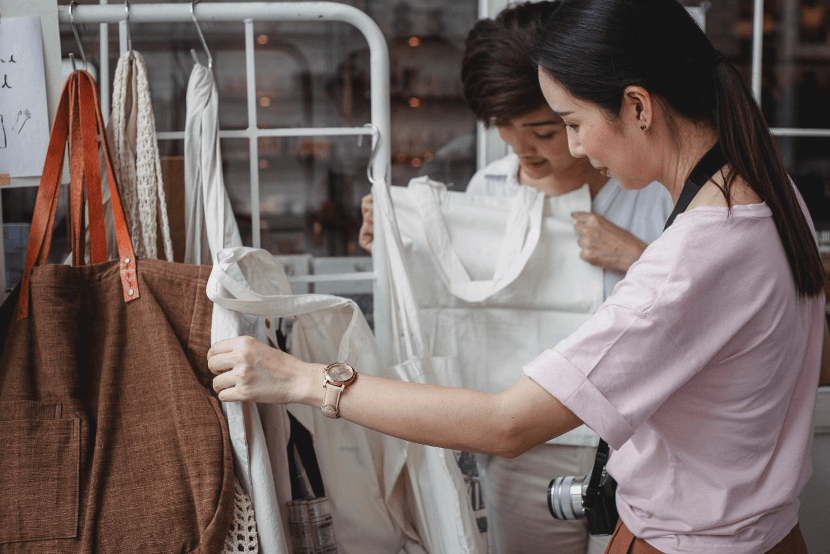Table of Contents
Textile waste has greatly increased over the past few years, making sustainable shopping a necessity.
The Natural Resources Defense Council reports that waste from these manufacturing plants generates over a fifth of the earth’s total water pollutants. Plants in China also produce three billion tons of soot which not only contaminates the air but can cause ecological repercussions and health issues for people living in the area.
The increased production of textile products stems from society’s overconsumption. When it comes to quality vs quantity, quantity is unfortunately more important today. But why do we give in to the need for excess?
Fast Fashion Is On The Rise
Fast fashion can be defined as the manufacturing process of brands recreating fashion fads as soon as they hit the market. The popularity of these styles oftentimes only lasts for a few seasons at most, meaning people that buy these clothes will find them useless after a short period.
Our past article on Choosing Organic Textiles explains that mainstream manufacturers use materials that are extremely harmful to the environment in the process of trying to keep up with fast fashion.
Sustainable shopping involves the purchasing of garments at a higher price point, but which are better quality and more environmentally friendly. Quality pieces should be made to last both wear and tear as well as the changes in fads within the world of clothing.
Case in point, Keith Haring’s collaborations are known to be made with quality materials while still boasting trendy styles. The designer’s estate is particular about choosing partnerships, like the one with Converse, which doesn’t give in to the ideas of fast fashion and has items that are designed to last years.
The problem is that many prefer to keep up with fads rather than spend on basics that are durable and better for the environment.
Minimalism Has Given Way To Maximalism
Minimalism was a trend that started decades ago and found its way back into pop culture during the early 2010s. This was the idea that people only needed the basics and emphasized simplicity rather than excess.
The problem is that during the pandemic, the focus on sustainable shopping based on minimalism has faded into the background and given way to the idea of maximalism, which at its core, can be harmful to the environment.
BBC explains how maximalism can also be called “clutter core” as it takes the idea that for something to look good, it needs to be surrounded by excess. While it heavily relies on displaying mismatched designs and styles, it also means that “more is more.” The people who follow this are no longer satisfied with having just what they need but instead believe that for a look to be complete, they need to own and layer more and more pieces.
This gives in to the idea that quantity is necessary to put an outfit together, making it harder to consume more responsibly.
Shopping Has Become Easier Than Ever

The last reason sustainable shopping is not a priority for many and it is becoming increasingly difficult to reduce overconsumption, is that buying items has become more accessible. Only 46% of consumers took the time to visit a physical store to buy things. The other 54% used the internet to do the same thing, making it easier to purchase clothing.
Fast fashion sites like BooHoo and Shein have made it especially more convenient as the pieces in their stores retail for affordable prices meaning individuals believe they have little to nothing to lose from overconsuming. Though the clothes from these platforms are sourced unethically and are made through unsustainable means, many people still buy from them because they are quick and accessible.
Though not everyone can afford slow fashion shopping, fast fashion has still remained a popular choice even for people who can spring for more quality pieces.
Sustainable shopping is now more difficult in a time when excess is deemed to be better. There is a growing need for people and companies to become responsible shoppers and manufacturers to help lessen the environmental effects textile waste can pose.
If you want to learn more about the importance of buying less and investing in quality vs quantity, you might also enjoy:
- How to Reduce Waste and Declutter Your Life
- Fast Fashion and Modern Slavery In The UK
- 8 Eco Friendly Shopping Switches To Make This Year
